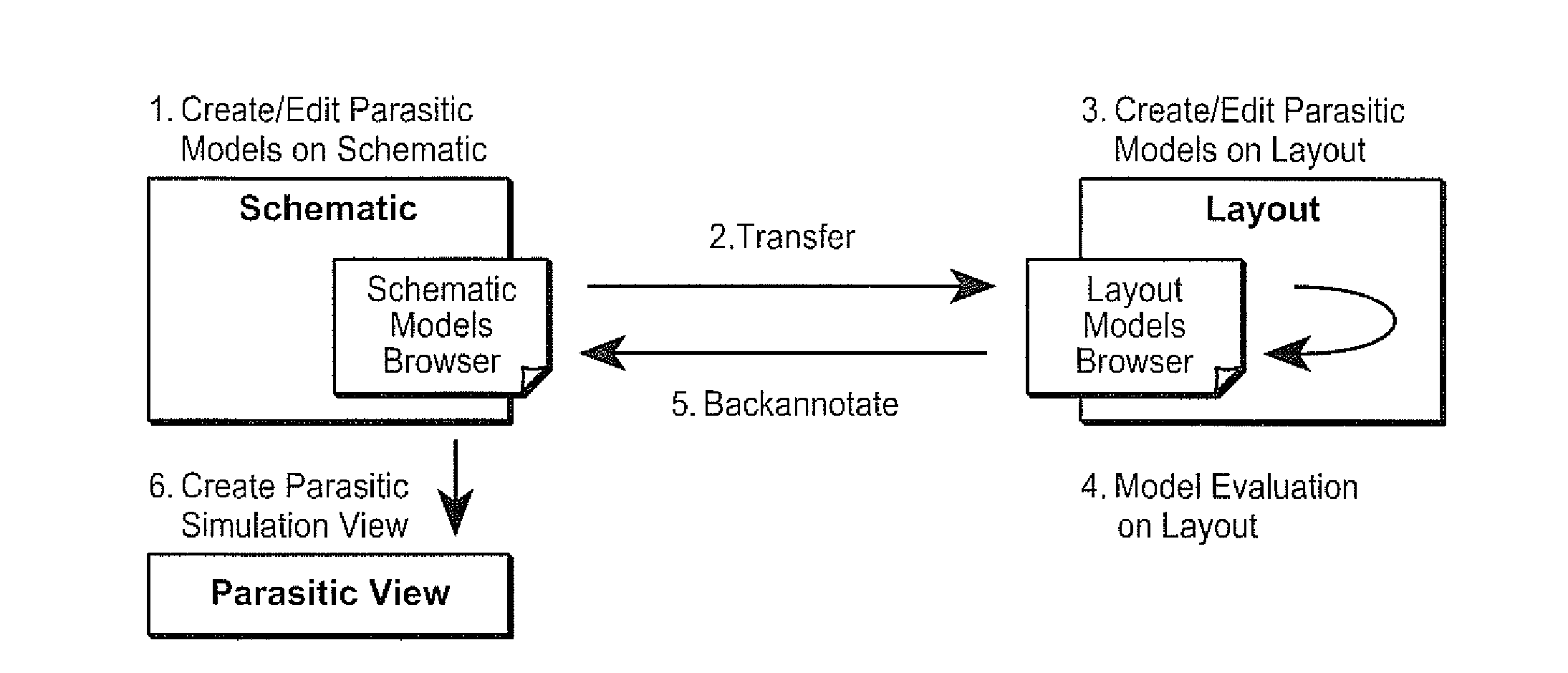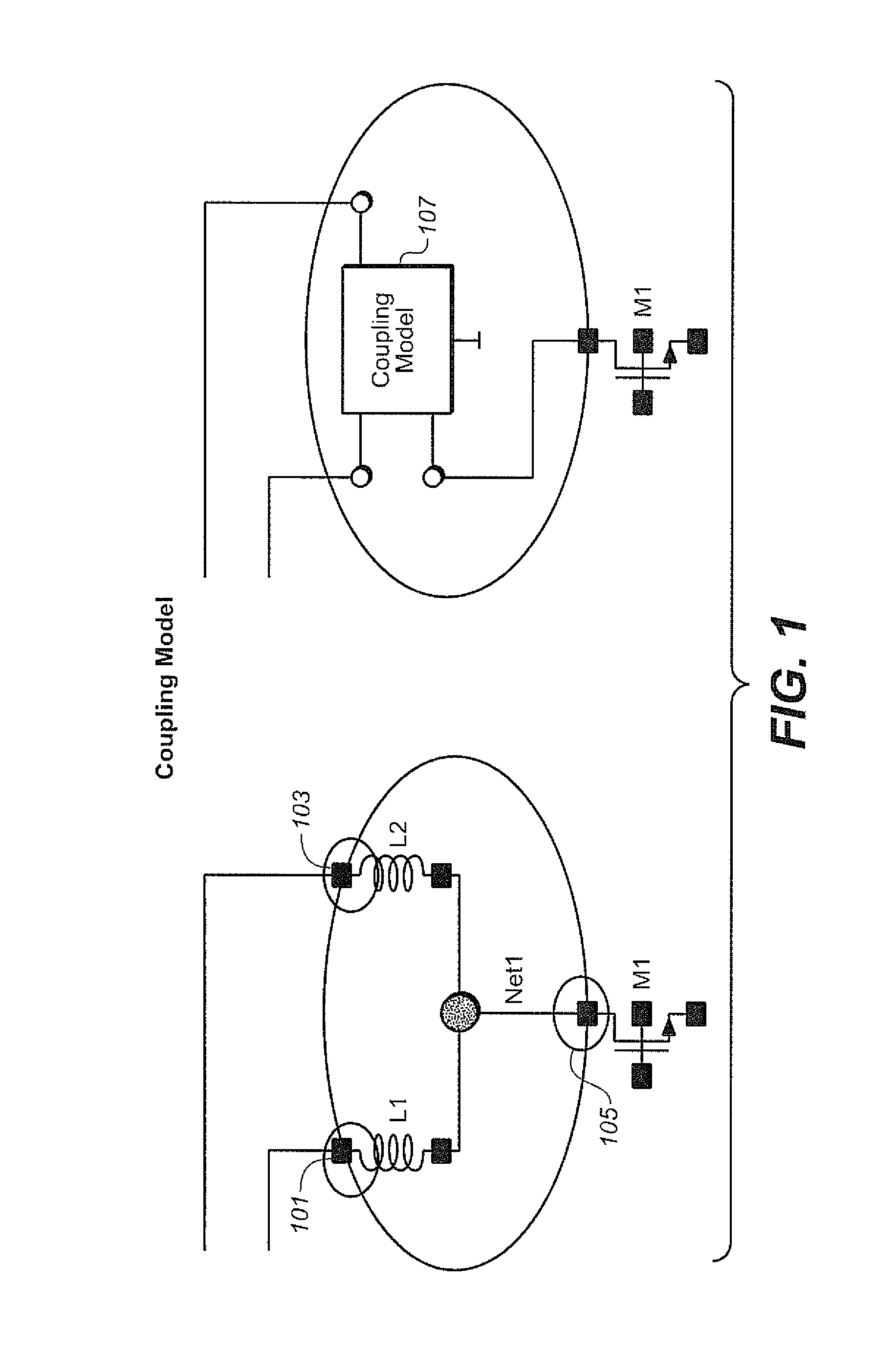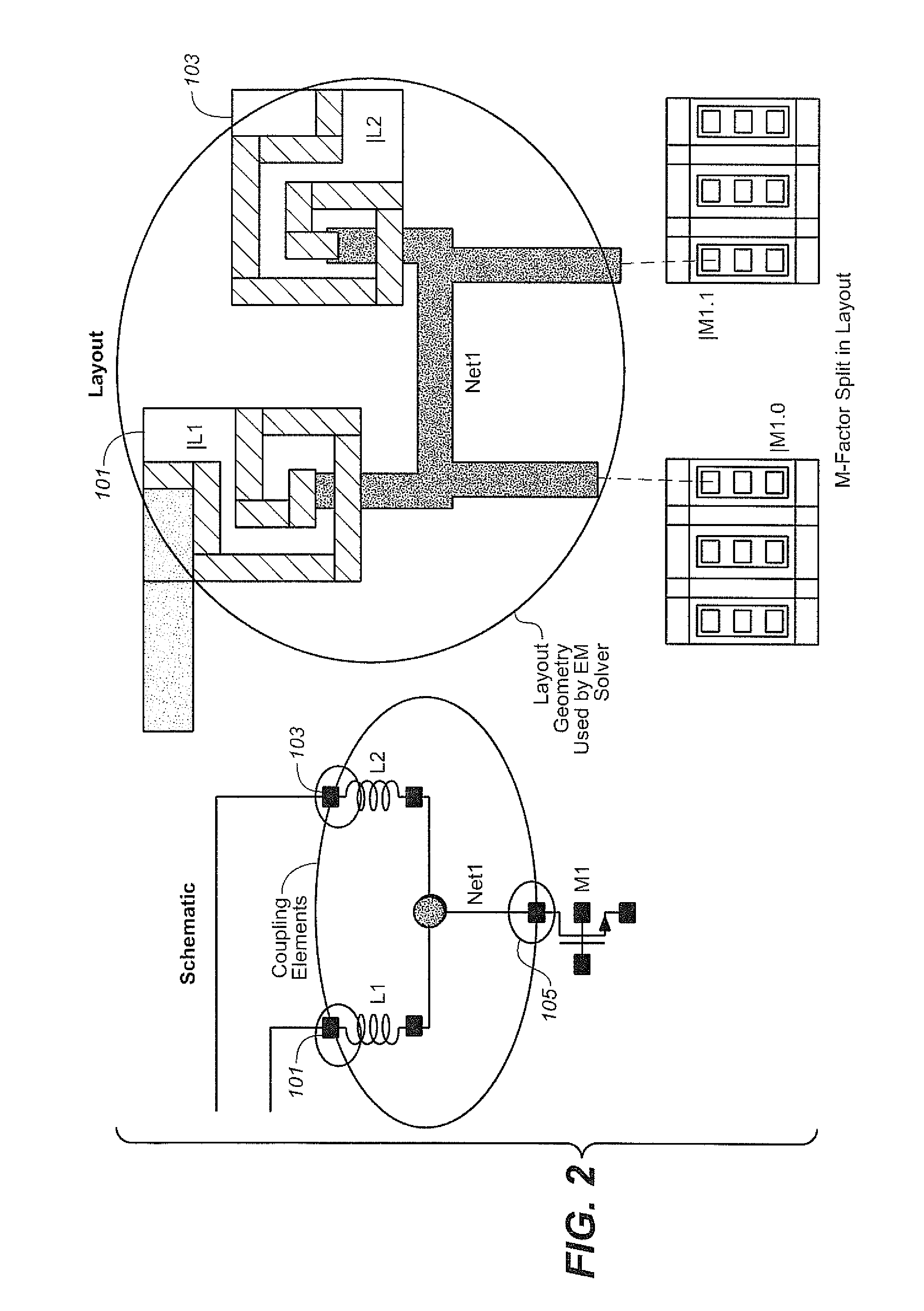Technique for modeling parasitics from layout during circuit design and for parasitic aware circuit design using modes of varying accuracy
a technology of layout and parasitic effects, applied in error detection/correction, program control, instruments, etc., can solve the problems of rf and high-performance analog designs being extremely sensitive to layout parasitic effects, affecting the electrical behavior of rf and high-performance analog designs, and shortening the typical analog/mixed-signal methodology described abov
- Summary
- Abstract
- Description
- Claims
- Application Information
AI Technical Summary
Problems solved by technology
Method used
Image
Examples
Embodiment Construction
Overview
[0026]As discussed in the Background, the electrical behavior of RF (radio frequency) and high-performance analog designs is increasingly being affected by layout intricacies that force designers to account for these effects early in the design cycle. Current analog / mixed-signal design flows are largely manual, relying on separate front-end design by a designer, who sizes the circuit schematic to meet performance goals, followed by hand-off to a layout engineer who places and routes the design. For most designs, the circuit may not meet all the specifications in the presence of layout parasitics, which are only detected after layout extraction once the layout is complete, resulting in multiple iterations between sizing and layout. To mitigate this problem, designers need to account for parasitics early in the design cycle, during circuit design and layout.
[0027]While some early estimation of parasitics is possible by using simplistic equation-based approximation techniques, ...
PUM
 Login to View More
Login to View More Abstract
Description
Claims
Application Information
 Login to View More
Login to View More - R&D
- Intellectual Property
- Life Sciences
- Materials
- Tech Scout
- Unparalleled Data Quality
- Higher Quality Content
- 60% Fewer Hallucinations
Browse by: Latest US Patents, China's latest patents, Technical Efficacy Thesaurus, Application Domain, Technology Topic, Popular Technical Reports.
© 2025 PatSnap. All rights reserved.Legal|Privacy policy|Modern Slavery Act Transparency Statement|Sitemap|About US| Contact US: help@patsnap.com



